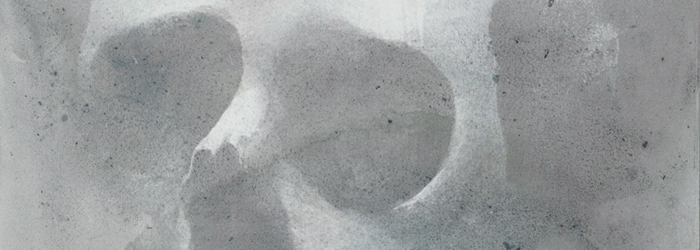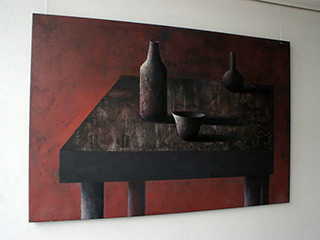Lines Inscribed Upon a Cup Formed from a Skull
George Gordon Byron
Start not—nor deem my spirit fled:
In me behold the only skull
From which, unlike a living head,
Whatever flows is never dull.
I lived, I loved, I quaff’d, like thee:
I died: let earth my bones resign;
Fill up—thou canst not injure me;
The worm hath fouler lips than thine.
Better to hold the sparkling grape,
Than nurse the earth-worm’s slimy brood;
And circle in the goblet’s shape
The drink of Gods, than reptiles’ food.
Where once my wit, perchance, hath shone,
In aid of others’ let me shine;
And when, alas! our brains are gone,
What nobler substitute than wine?
Quaff while thou canst—another race,
When thou and thine like me are sped,
May rescue thee from earth’s embrace,
And rhyme and revel with the dead.
Why not? since through life’s little day
Our heads such sad effects produce;
Redeem’d from worms and wasting clay,
This chance is theirs, to be of use.
Strongly objecting to his son marrying a cousin, William Byron, 5th Baron Byron, maliciously decided to commit himself to ruining his ancestral home of Newstead Abbey (built in the picturesque ruins of the priory once shut down by Henry VIII): he cut down the great stands of timber surrounding it, killed over 2,000 deer on the estate and allowed the house to fall into disrepair and ruin. The plan was thwarted, however, when he outlived both his son and grandson.
When he perished in 1798, the legacy of misery was left to the then 10-year-old George Gordon, a poet to be, who settled there a decade later. And this is when, in 1808, he wrote the poem, first published in the seventh edition of Childe Harold's Pilgrimage. In Conversations of Lord Byron (1824) Thomas Medwin reports how the poet told him the story behind the poem and the skull itself:
“There had been found by the gardener, in digging, a skull that had probably belonged to some jolly friar or monk of the Abbey about the time it was dismonasteried. Observing it to be of giant size, and in a prefect state of preservation, a strange fancy seized me of having it set and mounted as a drinking-cup. I accordingly sent it to town, and it returned with a very high polish, and of a mottled colour like tortoiseshell”. (Thomas Medwin, Conversations of Lord Byron, London 1824, p.71)
Apparently, Byron established a new Order of the Skull at Newstead Abbey, electing himself Grand Master or Abbot of the Skull. During its ceremonies, the goblet was filled with wine and passed about, “in imitation of the Goths (…) whilst many a grim joke was cut at its expense”. (Op. cit., p.71)






